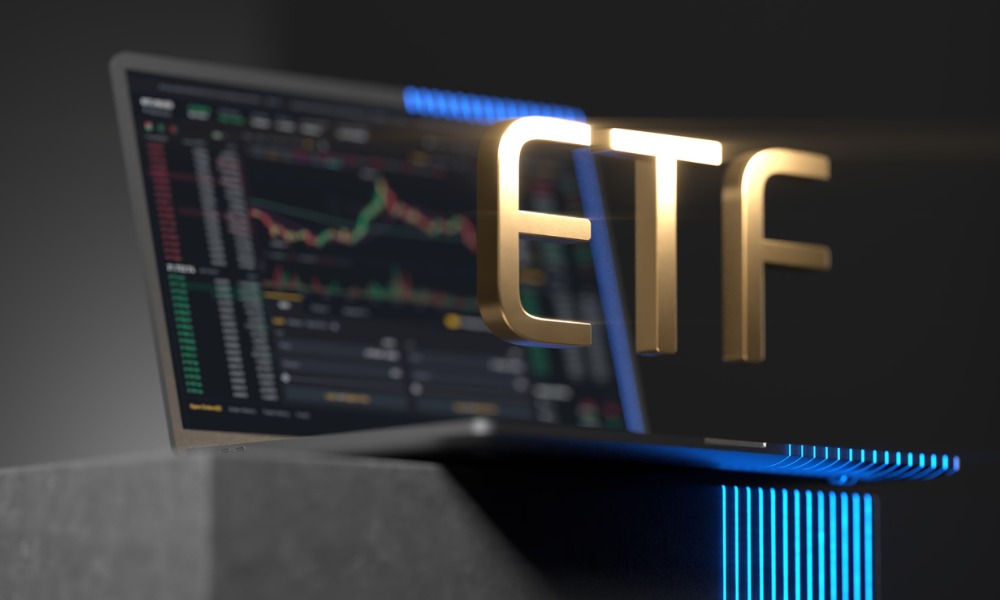Head of ETFs at Invesco Canada explains how three major trends reflect broad market direction and can inform future investment choices

The daily liquidity and transparent flows of capital reported in ETF markets give investors and analysts a unique window into investment trends, especially the direction of retail money. Pat Chiefalo watches those flows closely in his capacity as Head of ETFs and Indexed Strategies Canada. His work watching, analysing, and shaping the Canadian ETF landscape has informed his outlook on three distinct trends that he sees defining ETFs in the second half of 2025.
Chiefalo sees capital flowing into three distinct areas of the ETF market now. The first is in international growth opportunities. Given strong performance in European and other international markets, especially relative to the US, he expects ETFs covering those areas to gain and maintain momentum. Active ETFs, too, are attracting capital flows. Cheifalo notes that active fixed income strategies have picked up the greatest momentum. The third area of growth that Chiefalo identifies is in equal weight strategies which, despite some modest underperformance relative to cap-weighted strategies, are being taken up as a means of moderating concentration risk in portfolios.
“The ETF market is incredibly transparent, and trends are easily identifiable. It offers such a broad representation of investor choices and how money is being allocated, which provides very immediate and very important signals about investor behaviour,” Chiefalo says. “I think for advisors, institutional investors, or retail investors it's important to pay attention to these trends, in order to understand how other investors are electing to make portfolio allocations.”
International allocations picking up steam
Chiefalo’s first highlighted trend focuses on the renewed appetite among Canadian ETF investors for allocations outside of the US and Canada. Europe has been the leading destination for that capital as Europe’s main stock indices continue to outperform their US equivalents. The slowdown and instability that some investors have seen in the US, as well as that country’s recent significant outperformance and currently expensive valuations have prompted something of a reallocation away from the US.
That shift, Chiefalo notes, is not taking the form of US asset sales. He’s not seeing rapid flows out of US assets in the ETF market. Rather, in a trend that reflects some observations about institutional capital, investors are putting their marginal dollars and new investments into equity ETFs offering exposure to Europe and other international markets.
Despite Europe’s dominance in terms of performance and news headlines this year, Chiefalo notes that it hasn’t yet completely dominated ETF investors mindsets. The push towards international equities is truly international, with flows going to a wide range of regions beyond just Europe.
Active ETFs gaining share
Cheifalo highlights the growing popularity of active ETF strategies, noting that as the vehicle has become more established and trusted by investors there has been more appetite for these sophisticated ETF strategies.
“There is now a comfort factor for investors on not only index strategies but also active ETFs.” Chiefalo says. “While before there may have been concerns around portfolio transparency, and other aspects in active, we have reached a point where those concerns have been greatly alleviated. Investors expect both index and active strategies to be appropriately translated through an ETF vehicle.”
As those active strategies have proven where they add value and show success, capital has flowed to them. Chiefalo notes that not all active ETFs have picked up the same momentum, but Canadian ETF investors are heading towards the strategies they believe will work. Despite a greater number of active equity ETFs available on the market, the greater share of flows have gone into active fixed income strategies, reflecting investor demand and the apparent opportunity to differentiate as an active manager in that asset class.
Is equal weight having its moment?
Coming into the end of 2024 as US equity markets hit what were at or near all-time highs many analysts predicted that equal weight allocations might help investors navigate the year 2025. US markets were so expensive and concentrated in a few dominant mega-cap tech stocks that consensus was an equal weight allocation might help investors find better returns. So far in 2025 the cap-weighted S&P 500 has actually outperformed its equal weight equivalent. Despite that, Chiefalo sees ongoing appetite for equal weight ETFs.
Citing a period of relatively acute concentration risk, Chiefalo notes that many investors are seeking out these broader ETFs to moderate out those risks. Seeing how allocated they are to a few mega-cap names through the purchase of an ostensibly broad-market index ETF, investors are continuing to see value in equal weights despite some relative underperformance.
“Investors are using equal weighted ETFs as a portfolio tool, more than just simply seeking the best performance month to month,” Chiefalo says. “If I want a risk mitigating tool, I could layer in an equal weighted ETF, like EQL, to work with broad market exposures. If you have investors that are stock selectors, and they have a basket of their stocks that they want exposure to, adding EQL or EQLT can help diversify across US or Canadian sectors, providing that additional exposure without doubling down on some of those higher risk names that are acutely concentrated at the top.”



